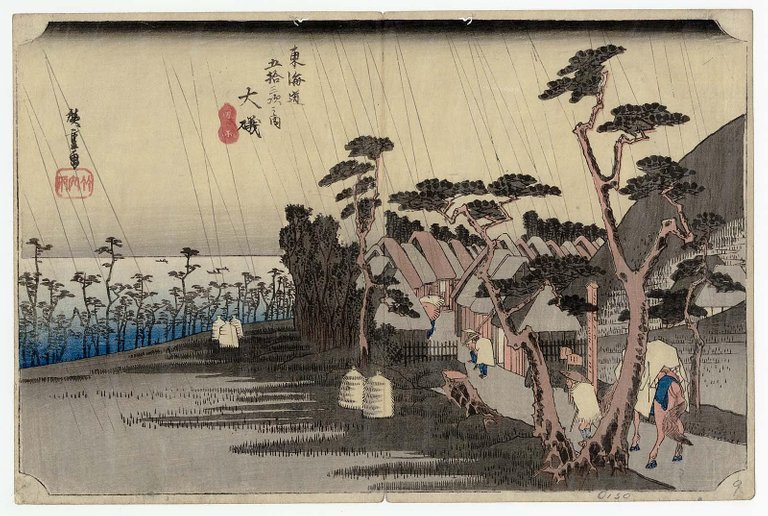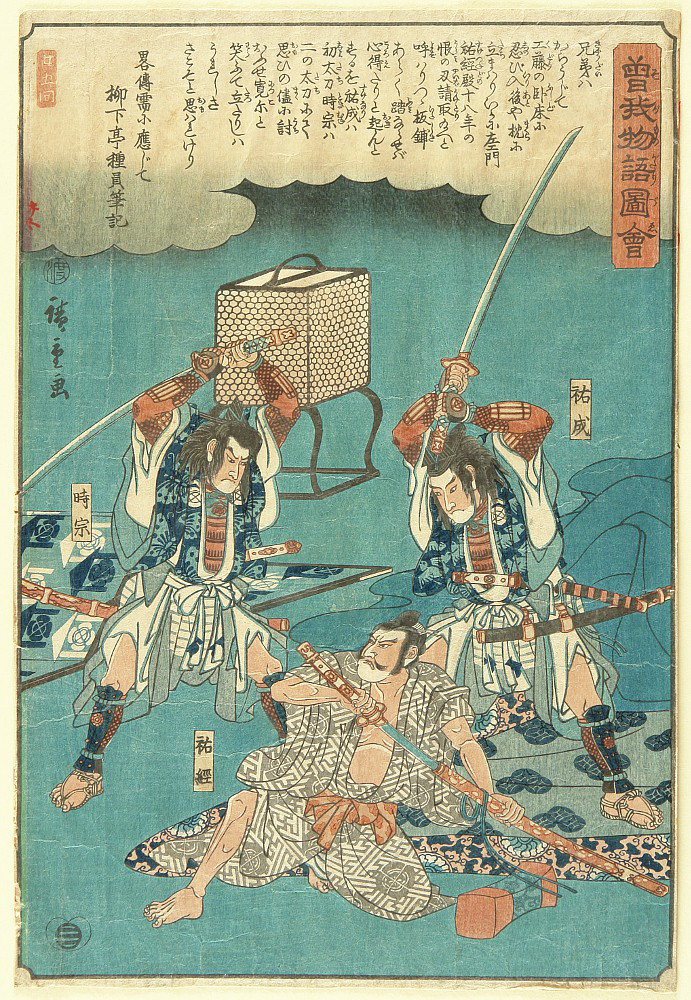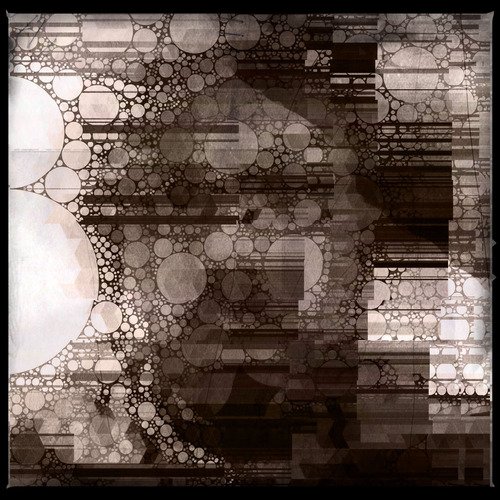Rain of the Lady Tora・Haiku of Japan
A few days ago on my History of Today post, I featured this haiku. Today I want to re-feature it specifically for this group and I also want to dive into the historic details of this really interesting kigo (season word).
ne shiroi ko ni tachi ni keri tora ga ame
her white night powder—
rain of the lady tora
—Hino Sojo


We might also translate that line tears of the lady tora. Literally that last line tora no ame says "Tiger's rain", and it's a really interesting kigo.
In the epic Soga Monogatari, the Lady Tora was the lover of the tragic hero, Juro Sukenari. In that story he avenges his father by killing his father's killer, his cousin Suketsune. But as these things go, he also was killed in the conflict. When the Lady Tora heard the news she shaved her head and became a monk at Koraiji-san in Oiso. It is said that she cries every year on the anniversary of the death of Juro, on May 28th, and her tears become the rain that falls on Oiso town and much of Japan every year on this date.
That is May 28th on the old calendar. The old calendar was a lunar calendar so the exact date changes every year, but it's usually around the end of June on the modern calendar. Coincidently that also happens to be when rainy season is, which gives a more plausible reason why it is often raining on that date, but as the saying goes, never let facts interfere in a good story.

Soga Monogatari is a pretty wild story. It is usually considered the last great war story in classical Japanese literature, telling the tale of two brothers in the 12th century. It takes place during the Gempei War, the most famous war in Japanese history which is featured in The Tale of the Heike, but it doesn't have anything to do with that war. It may be based on true events, but historians are divided on that.
Without getting too much into it and boring all of you, it is your typical tale of revenge and tragedy, where most of the people—good and bad alike—die. It's not entirely cut and dry and is a little like the Tale of the Forty-Seven Ronin in the mixed messages. It's a fun story anyway and is well worth your read if you happen across it in the library. It's been translated into English at least once.
At any rate, it was a very popular story and showed up in a lot of places, including many ukiyo-e prints. Some of the characters still show up in modern media. Of the story, the tale of the Lady Tora lamenting her lover with such intensity every year that the heavens joined her tears was a potent enough image that it entered haiku as a kigo (season word) for midsummer. It calls to mind not only the rains of rainy season, but something of the sadness of this story.
❦
 |
David LaSpina is an American photographer and translator lost in Japan, trying to capture the beauty of this country one photo at a time and searching for the perfect haiku. |
That is, me! If you like this translation, feel free to use it. Just credit me. Also link here if you can. ↩
I don't know so much about japanese culture, that's why I like this post because is a glimpse of that wonderful culture.
Glad you enjoyed it!
I can’t understand the Japanese of this haiku at all.
Is 寝白粉 a sleeping powder, or an incense that was burnt at night? And how is たちにけりbeing used?
I can’t tell if that たちis supposed to be like the verb to stand or if it means something else.
In your other post, you said that this was a really great haiku. Would you mind commenting more on what makes it great? I’m curious to learn more.
Great questions, @boxcarblue! Let me see if I can explain a bit.
Yes, that's right. It was a night power that Heian ladies of means would wear. They wore it both day (in which case, it was just 白粉) and night, actually.
It's a classical Japanese verb meaning something like "has risen" or "has begun". The けり part can be used to indicate a recollection or realization and also to imply a sense of completion. In this haiku, my interpretation is that it's being used to show the awakening of her painful memory, the start of her annual mourning period for her lover which is so powerful all of Japan feels it.
As for why it's great, I admit I am biased because I love the Soga Brothers story and so this connection with it tickles me. But also I think it very artfully weaves together themes of love, loss, remembrance, and the favorite of Japanese literature and culture, impermanence. The image of the Lady Tora in her morning is very evocative.
As you know, themes of love, loss, the ephemeral nature of life, etc, are extremely common in Japanese literature, from Heike Monogatari to Soseki's Kokoro. This haiku sums up that feeling perfectly and very potently, in just 17 mora.
I couldn't figure out if たち and けりwere being used together as a single phrase like たちにけり or if they were being used separately and connected by the に particle.
I did come across the use you mention here, but I still couldn’t connect it to the powder or the story in a meaningful way.
You certainly know your stuff.
I woke up early this morning and, while sitting in a bit of stupor drinking iced coffee and listening to the rain, I thought of this haiku and its kigo and you mentioning in another post how past haiku poets would refer to other haiku and/or make small changes to them, and so I wrote this.
Outside, the sound of
the Tiger Lady’s lament,
constant and steady.
I love it!
I sometimes do that too, sitting and thinking about a certain kigo, and then out will pop a haiku using it that fits the current situation
It was really nice to have the timing if so many things come together like that.
I shared that haiku with my father-in-law and he was pretty impressed by the kigo. He had never heard of it before, so he took his dictionary out and looked it up right away.
I'm not surprised he's not heard of it. Most saijiki are full of thousands of kigo. It's hard to know them all. Speaking of looking it up, here is an online saijiki that I use. You may enjoy it too.
Here's their entry on 虎が雨
What doe her night white powder refer to? Clouds? That is the part I found the most interesting. It kind of threw me. This is an interesting tale. It seems most cultures have something like this. Maybe not as widespread tragic though. Just a couple of people dying and what not.
It could symbolically refer to the rain clouds, sure. Women of the classical period would always wear a thick white power, day and night. It was thought to be healthy, but also white was very much a mark of beauty (as you can see with geisha today). Mentioning the powder is very evocative of her former station as an upper class lady of means.
There is also a suggestion of the cyclical nature of her mourning and of time. Ladies would apply their night powder before bed every night, night after night, day after day. Just as she mourns for her lover every year.
Yeah I think all cultures all over the world have their own tragic tales. Life used to be much harder than it is now, and I think this is reflected in these tales.
Thanks for the great explanation! Good stuff!
Your Japanese knowledge of stories and history are always amazing! Lot’s of fun things to read.
My most of history and Classical Japanese teachers at schools were very motivated teachers. They were pretty good story tellers. Some of them cried about history during their lessons because they were too excited to tell the stories… I respect Otaku teachers! I still remember their stories.
Anyway, it’s very elegant to wear “white night powder!” I never wore it in my life. Ancient ladies were very interesting.
haha history otaku. Am I a history and classical lit otaku... maybe so! I know what you mean. My favorite teachers in school were history and literature teachers, especially the ones who got very excited about some of the stories.
I love this haiku because of the images. A Heian lady calming applying her white night powder before her annual morning period is such a powerful image.
This haiku is interesting because of its relationship to the legend. I thought the Japanese mainly wrote about nature, so it is fascinating to see that they also wrote haikus about literature.